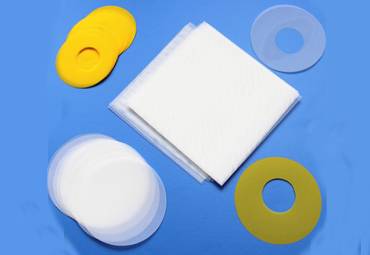How to for Screen Printing t-Shirts
Mar. 06, 2020
Glass printing mesh supplier to share with you:
1) PREPARING YOUR ARTWORK:
To print a shirt, you of course have to have something to print on the shirt. Whether you design the artwork yourself or a customer brings it to you, all screen printing starts with some type of artwork. When thinking about the artwork you want on your t-shirts, keep in mind that garbage in = garbage out. In essence, the better the quality of artwork you start with, the better quality of a screen print you end up with. When screen printing t-shirts, you print one color at a time. If you are printing multiple colors, you will need a way to separate the colors from each other so you can create different screens for your design. You need one color per screen.
A lot of screen printers use photoshop to take care of their artwork needs. These programs separate and clean up the artwork to help you prepare for printing.
2) PRINTING YOUR FILM POSITIVES:
Once your artwork is created and the colors are separated, the next step is to create a film positive. You will use this film positive to burn your image into a silk screen. A film positive transparency is basically like an overhead transparency. Whatever you want to print on the t-shirt, you print out in black ink on the film positive.
There are many ways to make film positives. You can go to your local print shop, hand draw your image, or purchase a compatible printer that you can use at home or in your shop.
3) EXPOSING YOUR IMAGE INTO A SCREEN:
So you have your printed films. Now it is time to make the screen. A screen printing frame consists of a wood or aluminum frame stretched with polyester screen mesh on it. The mesh holds the image onto the screen and lets ink pass through when you press it with a squeegee. You will need to coat the mesh with emulsion in order to expose the design onto the screen. Before you coat the mesh, it needs to be cleaned with a special screen printing degreaser.
Emulsion is light sensitive, so coating the screen is typically done in a dark room that has special light safe yellow bulbs in it. After the screen is coated and dried, align your film positive onto the screen and expose it with a screen printing exposure unit or light for an allotted amount of time. The screen hardens to light, but the film positive or black area of the film blocks light from reaching the emulsion. This leaves the area of emulsion unexposed or soft. After the screen is exposed, simply rinse it with water. The soft part of the emulsion that was not exposed rinses out leaving areas of the mesh open that reflects your design.

Polyester Screen Mesh
4) SETTING UP YOUR SCREEN PRINTED PRESS:
Before you are ready to start screen printing t-shirts, you need to step up the screens on your screen printing press. A screen printing press consists of a base that holds your printing platen and a number of color arms. A manual press can be as small as a 1 color 1 station, or as large as an 8 color 8 station. Automatic presses, like the ROQ, can be even larger!
Of course, if you have more color arms, you have the ability to print more colors at one time, Likewise, if you have a higher amount of printing stations, you can print faster. Right before you clamp your screens into your press, you need to tape off the edges of your frame with screen printing tape. This helps keep ink from getting places you don’t want it to.
If you are printing a multiple color job, you’ll need to register the colors together, so that they line up correctly when you print all of the colors onto a shirt. Using a press with joystick registration or micro registration is extremely helpful when printing fine detail and multiple color prints. Once you think your screens are in registration, you need to complete a test print to ensure that everything is lined up right.
5) PRINTING YOUR SHIRTS:
Before loading your shirt onto the platen, you will want to make sure to apply adhesive to the platen. This helps the shirt stick to the platen and not move around. You can use either liquid adhesive or spray adhesive. Load your shirt onto the press and get your printhead aligned. Before locking the print head into place above your shirt, make sure to flood the screen with ink. Once the print head is locked down, push or pull the screen printing ink across the screen to deposit the ink onto the shirt. You may need more than one round of this depending on how much ink was deposited. If you are printing multiple colors, follow these steps with your other screens.
Keep in mind that you may need to flash your shirt in between prints. This is especially true if you are printing on dark garments with a white under base. The flash dryerhelps to cure/set the ink. This gives you the ability to print another color on top of your first layer. You also need to cure your shirt after you are completely done printing it. You can cure a shirt with a conveyor dryer or a flash dryer. Ink cures at around 320 degrees. If a shirt isn’t cured properly, the ink will not last and the print will start to degrade. Using a laser temp gun is a great way to make sure that the ink cured to the right temperature.







